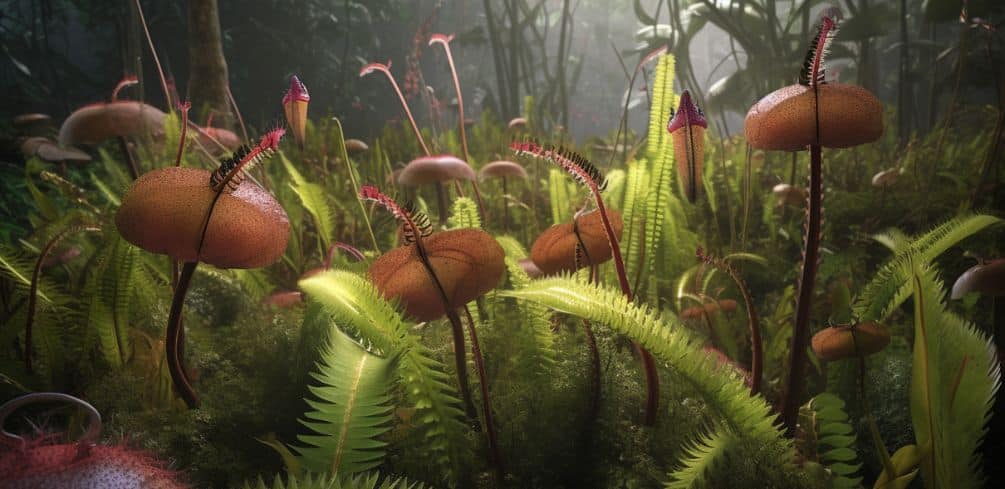
Are you tired of pesky gnats invading your home and garden? Well, it’s time to turn the tables and let nature do the work for you. Instead of using harmful chemicals or constantly swatting these tiny nuisances away, why not introduce some carnivorous plants into your space?
These fascinating organisms have developed unique ways to capture and consume insects, including those annoying gnats. In this article, we’ll explore five incredible gnat-eating plants that will not only help keep your surroundings bug-free but also add an interesting touch to your environment.
Dive into the world of carnivorous plants as we discuss their captivating characteristics and learn how they’ve evolved to become efficient insect hunters.
From the classic Venus flytrap to the lesser-known bladderworts, these intriguing specimens are sure to pique your curiosity while providing a valuable service in keeping gnats at bay.
Say goodbye to fruitless efforts with flypaper or bug zappers – instead, welcome a natural solution that doubles as an engaging conversation starter! So grab a trowel and get ready for some green-thumbed vigilante justice against those pesky gnats.
The Venus Flytrap: A Classic Carnivore
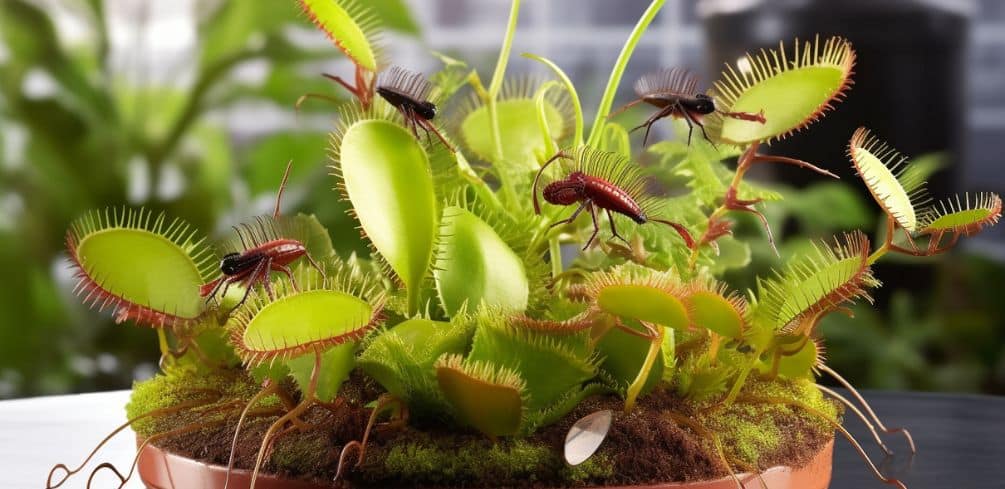
You’ve likely heard of the Venus flytrap, a classic carnivorous plant known for its ability to trap and consume insects like pesky gnats.
Native to the subtropical wetlands of North and South Carolina in the United States, this fascinating plant has evolved several unique adaptations that allow it to thrive in nutrient-poor environments.
One such adaptation involves luring unsuspecting insects with sweet nectar into its modified leaves, which snap shut when triggered by tiny hairs inside. This trapping mechanism is so effective that it can capture not only flying insects like gnats but also crawling bugs such as ants and spiders.
Another remarkable aspect of the Venus flytrap is its ability to digest prey using gnat-digesting enzymes within its leafy traps. Once an insect is captured, the plant secretes these enzymes along with other digestive fluids to break down its meal into nutrients. It then absorbs these nutrients directly through special cells on the inner surface of its modified leaves.
This process allows the Venus flytrap to supplement its diet with additional nitrogen, phosphorus, and other essential elements often lacking in its native habitat’s soil.
While many people are fascinated by this extraordinary plant’s hunting prowess, it’s important to remember that Venus flytraps are vulnerable species that need protection from habitat loss and over-collection by enthusiasts.
By understanding more about their unique adaptations and supporting conservation efforts, you can help ensure that future generations will continue to marvel at these incredible carnivorous plants’ abilities – especially when it comes to trapping those annoying gnats!
Check out the best grow light for the Venus Fly trap.
Sundews: Sticky Trappers
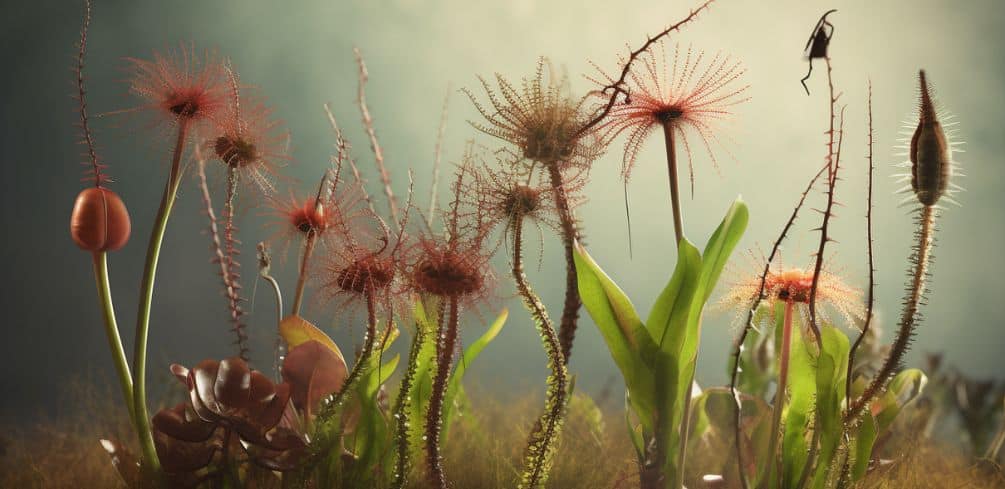
Sundews aren’t just fascinating to observe, they’re also efficient in trapping tiny pests like gnats with their sticky tentacles. These carnivorous plants boast a range of adaptations that make them both effective hunters and interesting additions to any carnivorous gardening collection.
Found across all continents except Antarctica, these plants have adapted to live in nutrient-poor soils by supplementing their diet with insects, including those pesky gnats. The key to the Sundew’s success as a gnat-eating plant lies in its unique method of capturing prey.
Each leaf is covered in hair-like structures called tentacles, which are topped with glands that produce sweet-smelling and sticky mucilage.
Gnats and other small insects are attracted to this scent, only to find themselves ensnared by the adhesive substance. As the insect struggles to free itself, the movement triggers nearby tentacles to close even tighter around it – ensuring there’s no escape for the hapless pest.
But don’t be fooled into thinking that once an insect is trapped on a Sundew leaf, it’s game over immediately. The process of digestion can take quite some time; enzymes secreted by the plant slowly break down the captured insect, allowing it to absorb vital nutrients such as nitrogen and phosphorus from its meal.
This slow yet steady approach not only ensures that Sundews get every last bit of nourishment from their prey but also serves as a stark reminder of nature’s ruthless efficiency when it comes to survival strategies.
So if you’re plagued by gnats and looking for an intriguing way to keep them at bay, consider adding these sticky trappers – Sundews –to your garden world!
Pitcher Plants: Insect Swallowers
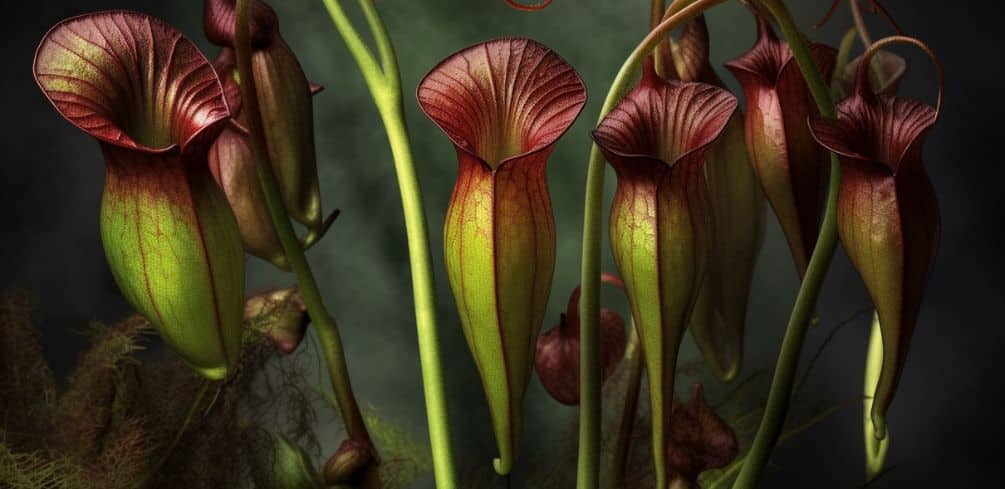
If you’re fascinated by carnivorous plants, then you’ll definitely want to learn about pitcher plants – nature’s insect swallowers! These unique plants are known for their ability to trap and digest insects, making them a natural form of pest control.
Pitcher plants come in a wide range of colorful varieties, making them an attractive choice for indoor cultivation. With the right pitcher plant care, these captivating carnivores can thrive in your home or garden.
One thing that sets pitcher plants apart from other carnivorous species is their method of trapping prey. Instead of using sticky substances like sundews, they utilize modified leaves shaped like pitchers to lure and capture insects. The inside walls of these pitchers are slippery and contain digestive enzymes, ensuring that any unlucky critters who stumble into the trap can’t escape.
Indoor cultivation is possible thanks to hybrid creations designed specifically for growing in less-than-ideal conditions found within homes.
To care for your pitcher plant and ensure its success as a natural pest control agent, it’s essential to replicate its native environment as closely as possible. This means providing adequate light (preferably indirect sunlight), maintaining proper humidity levels, and using appropriate soil mixtures such as sphagnum moss or peat moss mixed with perlite or sand.
Watering should be done with distilled water or rainwater since tap water may contain minerals harmful to the plant. By following these guidelines and taking time to understand your specific variety’s needs, you can enjoy watching your pitcher plant flourish while keeping gnats at bay!
Butterworts: Irresistible Insect Attractors
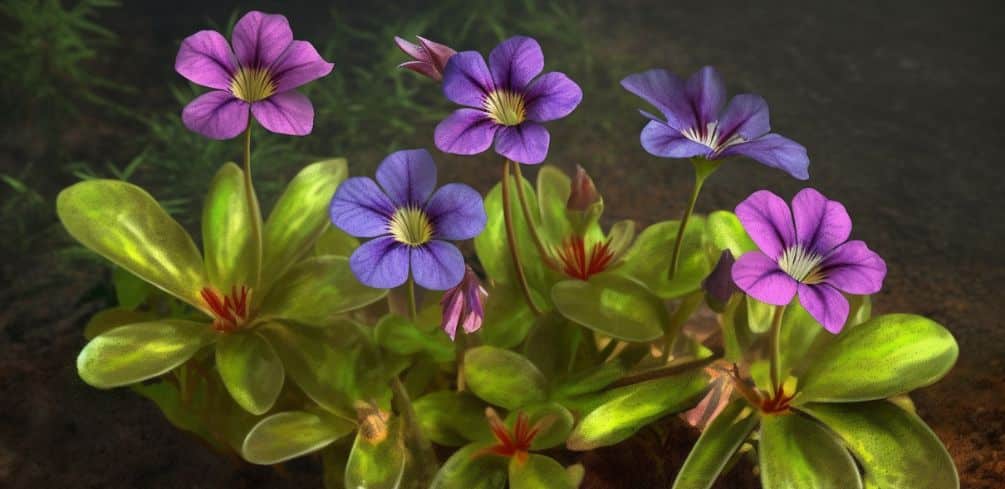
Butterworts, another intriguing type of carnivorous plant, can’t resist luring in those pesky insects with their captivating charm. These plants have sticky leaves that trap small insects like gnats, providing the plant with vital nutrients.
Butterworts thrive in various growth conditions, ranging from sunny windowsills to boggy habitats. They are known for their soil preferences, which typically consist of a mixture containing equal parts peat moss and perlite or sand – an environment that keeps them moist but well-drained.
During the flowering season, butterworts produce beautiful blooms atop slender stalks that rise above their rosettes of basal leaves. The colors vary depending on the species and hybrids – some common hues include purple, pink, white or yellow flowers.
Speaking of hybrids, there’s an extensive range of butterwort hybrids available for cultivation by enthusiasts seeking unique characteristics such as larger traps or more vibrant blossoms. As soon as these enchanting flowers fade away after pollination occurs and seeds form within capsules, it’s time to propagate your collection!
Propagation methods for butterworts involve dividing mature plants during dormancy or sowing seeds right after collecting them from ripe capsules. When dividing plants, carefully tease apart the root system and transfer each division into a pot filled with the preferred soil mix mentioned earlier.
Alternatively, when propagating from seed, surface sow onto damp sphagnum moss or a fine layer of peat – patience is key here since germination can take several weeks to months!
No matter which method you choose for expanding your carnivorous garden repertoire – know that you’re giving these irresistible insect attractors an opportunity to showcase their beauty while keeping gnats at bay!
Bladderworts: Underwater Hunters
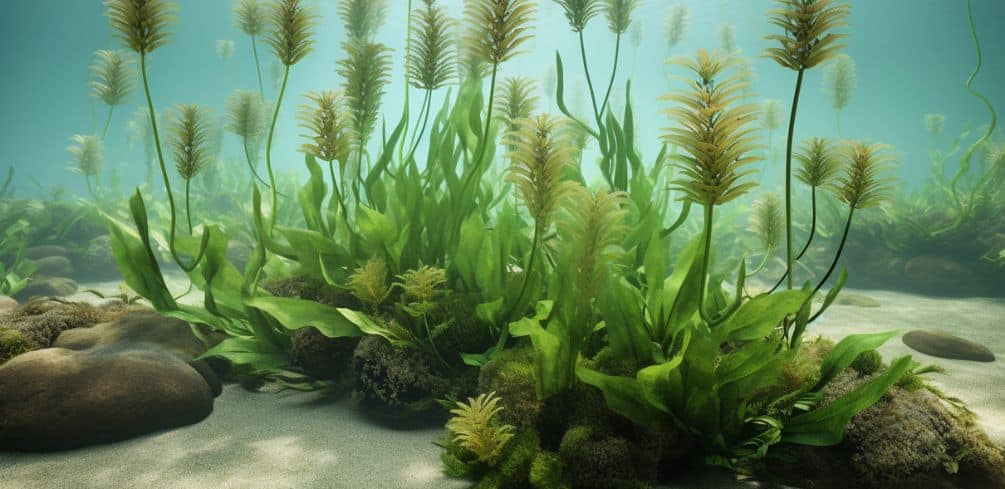
You might think bladderworts are simply all wet, but as they say, still waters run deep – these underwater hunters certainly know how to catch their prey and put on a show while doing it! These fascinating carnivorous plants have developed several bladderwort adaptations that enable them to thrive in aquatic environments.
With over 200 species of bladderworts found worldwide, there’s never a dull moment when you dive into the world of these dynamic underwater marvels.
Bladderworts have some truly remarkable features that help them capture gnats and other small organisms:
- Underwater trapping mechanisms: Bladderworts possess small, hollow bladders with tiny hair-triggered doors. When unsuspecting prey brushes against the hairs, the door opens quickly, sucking in water and the organism, then snapping shut.
- Prey preferences: While most bladderwort species prefer aquatic insects like mosquito larvae or daphnia (water fleas), some unique ones target terrestrial insects by having traps above water level.
- Bladderwort care tips: To keep your bladderwort happy and healthy, maintain clean water conditions free from harmful chemicals and provide plenty of sunlight for photosynthesis.
- Unique bladderwort species: Some standout species include Utricularia inflata, which produces large floating leaves resembling water lilies, or Utricularia sandersonii with its charming rabbit-shaped flowers.
As you can see, there’s more to bladderworts than meets the eye – these underwater hunters are both captivating and efficient at controlling pesky gnat populations.
By understanding their adaptations and caring for them properly, you can witness firsthand how these incredible plants turn aquatic hunting into an art form while keeping your environment gnat-free!
Conclusion
In conclusion, these amazing carnivorous plants are nature’s superheroes in the fight against gnats and other pesky insects. You can’t go wrong with any of them in your insect-fighting arsenal!
Another way to go is using organic insecticide.
